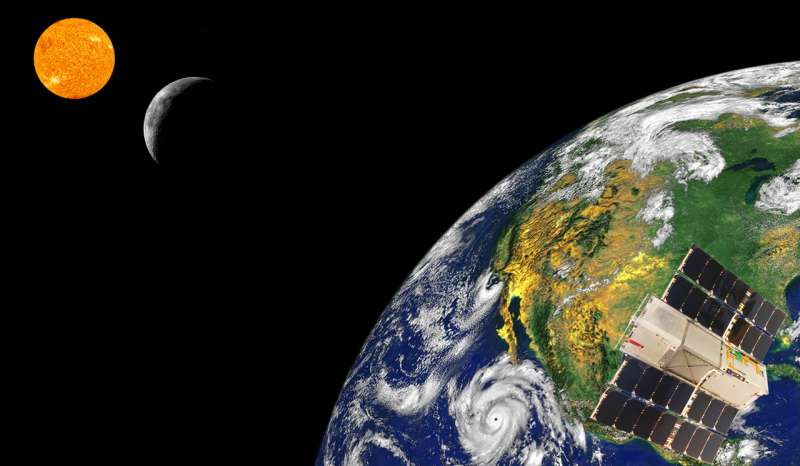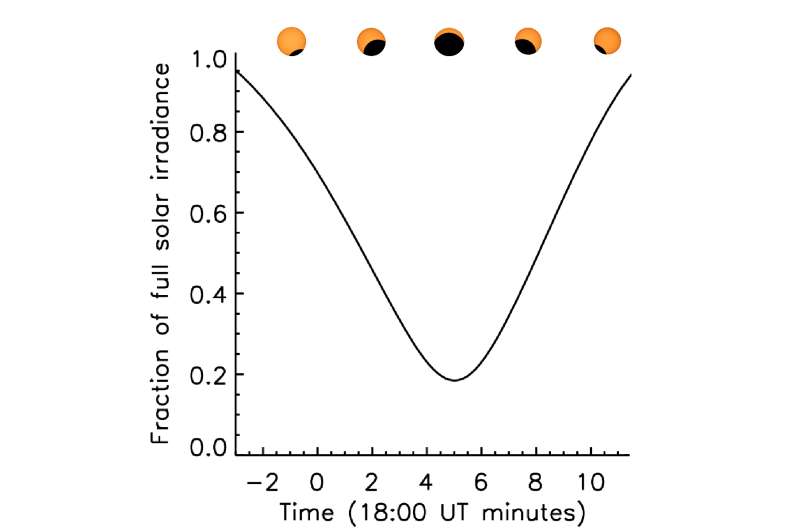A RAVAN in the sun

While people across the nation gazed at August's total solar eclipse from Earth, a bread loaf-sized NASA satellite had a front row seat for the astronomical event.
The Radiometer Assessment using Vertically Aligned Nanotubes, or RAVAN, CubeSat was developed to test and validate light-absorbing carbon nanotubes as a new method for measuring Earth's radiation imbalance, which is the difference between the amount of energy from the sun that reaches Earth and the amount that is reflected and emitted back into space. The measurement is key for predicting changes in the planet's climate.
RAVAN began collecting data from Earth's orbit on Jan. 25, 2017, and the technology demonstration was declared a success in early August.
But the solar eclipse on Aug. 21 gave researchers a unique opportunity to further test an important carbon nanotube attribute: its strong sensitivity to rapidly changing energy outputs. While designed to measure the amount of reflected solar and thermal energy emitted from Earth into space, during the eclipse RAVAN's highly sensitive nanotubes would be trained instead on the sun to detect changes in the amount of incoming solar energy.
Because the researchers knew the CubeSat's location and the percentage of eclipse it would measure, it was easy for the team to compare the satellite's data to the known solar irradiance. Due to RAVAN's position in orbit, it did not catch eclipse totality—where the moon completely blocks the sun's light. Instead, from its position high above the U.S., RAVAN was to collect data of an approximately 80 percent eclipse, similar as to what was observed from principal investigator Bill Swartz's home organization, the Johns Hopkins Applied Physics Laboratory in Laurel, Maryland, which leads the mission.

As the moon passed between Earth and the sun, RAVAN's instruments responded rapidly and accurately to measure the diminishing solar energy that was visible to the satellite's detectors. Swartz explained, "Although RAVAN routinely views the Sun for solar calibration, it tracked the sudden change in solar energy afforded by the eclipse as expected."
Now, with eclipse-tested technology, RAVAN is trained back at Earth as Swartz and his team continue to monitor the satellite's instrument performance, perform data analysis, and compare its measurements with existing model simulations of Earth's outgoing radiation.
RAVAN's current test and validation mission is the first step to enable a future constellation of CubeSats that would orbit Earth and provide continuous global coverage of Earth's radiation imbalance to improve on current measurements, which are taken by instruments housed on a few large satellites.
Having smaller satellites placed uniformly around the planet could offer an advantage when it comes to studying Earth's energy imbalance. "The radiant energy emerging from the Earth changes rapidly in time and space, particularly as viewed from a satellite constellation speeding along in low-Earth orbit," Swartz said. "The solar eclipse provided a unique opportunity to test the RAVAN measurement responsiveness in a controlled fashion, further proving the technique for Earth observation."
RAVAN was funded through a NASA Earth Science Technology Office (ESTO) program that demonstrates new technologies that, when validated, could be applied to a broad range of NASA Earth observation and science measurement needs. During their mission lifetimes, CubeSats like RAVAN are put through their paces to ascertain how well the new technologies and methodologies work in orbit.
Small satellites, including CubeSats, are playing an increasingly larger role in exploration, technology demonstration, scientific research and educational investigations at NASA, including: planetary space exploration; Earth observations; fundamental Earth and space science; and developing precursor science instruments like cutting-edge laser communications, satellite-to-satellite communications and autonomous movement capabilities.
Provided by NASA's Goddard Space Flight Center





















